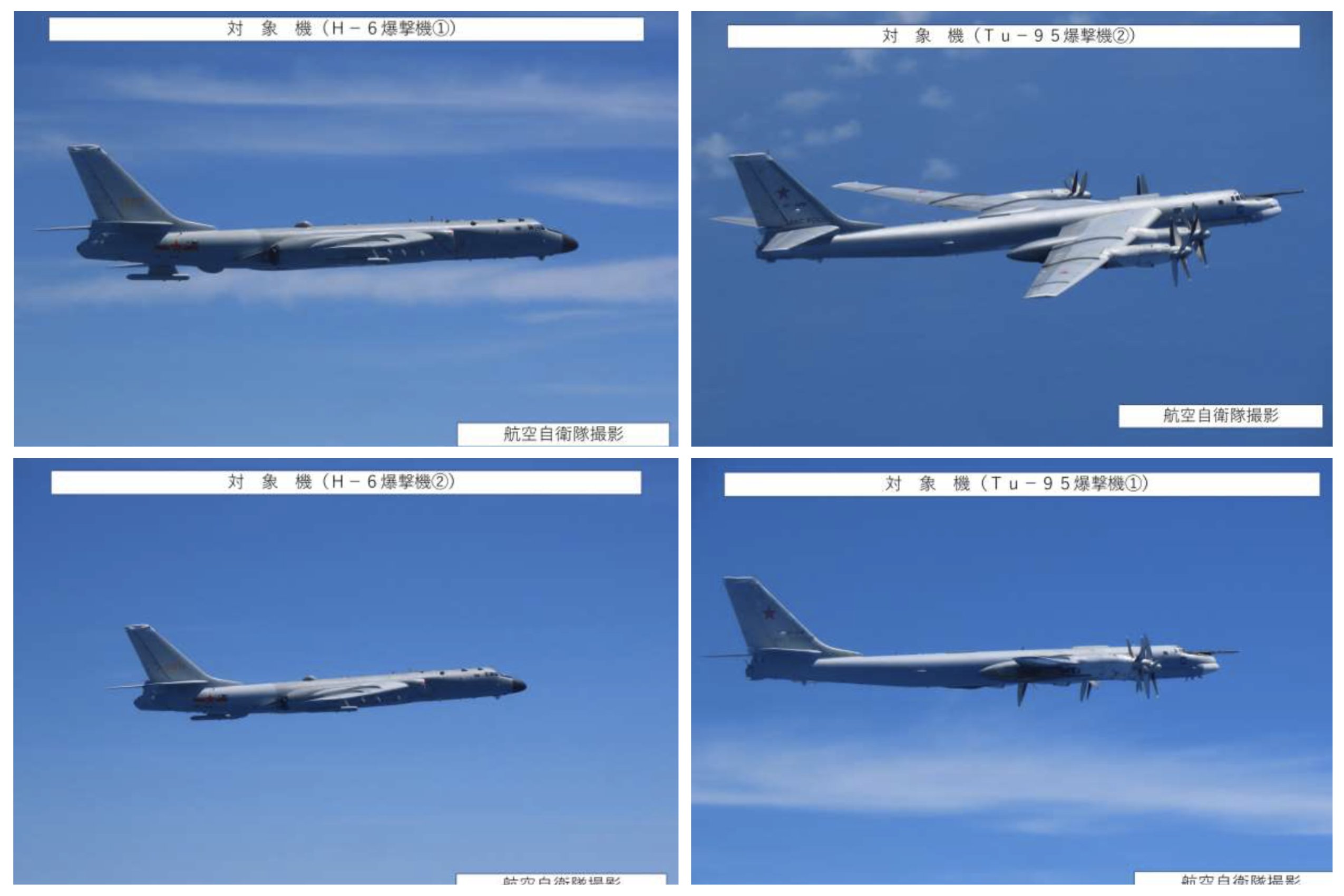
Japan Air Self Defense Force (JASDF) fighters conducted 238 scrambles in the first quarter of Fiscal Year 2023, according to data released Friday by the Joint Staff Office of Japan’s Ministry of Defense.
Of the 238 scrambles, 66 percent were against Chinese aircraft and 31 percent against Russian aircraft with the remaining 3 percent due to other aircraft, according to the data.
The first quarter data, which goes from April 1 to June 30, is about the same as the previous year, when there were 235 scrambles in the first quarter of FY 2022, according to the JSO.
Scrambles against Chinese aircraft decreased compared to the previous year’s first quarter. Japanese aircraft scrambled 157 times in FY 2023’s first quarter compared to 171 in the same period during FY 2022. However, the JSO still considered the number high, according to a JSO statement released with the data.
Scrambles against Russian aircraft increased between the two quarters with 71 in FY 2023 compared to 58 in FY 2022.
Japan recorded one scramble against Taiwanese aircraft for the first quarter of 2023 compared to none in the same period in FY 2022. It also recorded seven scrambles against other, unidentified countries, one more compared to the previous period.
When the JSO broke the scrambles down by air district commands, the Southwest Air District had the most at 146. However, that was down from 152 compared to the same period in FY 2022.
The Northern Air District scrambled 48 times, an increase of three over FY 2022, the Western Air District saw 26 scrambles compared to 33 and the Central Air District increased to 18 from five in the previous year.
The JSO release noted that among the air activities noted in the first quarter of FY 2023 were two consecutive days of long-range joint flights by H-6 Chinese bombers and Tu-95 Russian bombers in the East China Sea, the Pacific Ocean and the Sea of Japan. People’s Liberation Army Navy (PLAN) aircraft carrier CNS Shandong (17) conducted a total of 620 launches and recoveries of fighter aircraft and helicopters in the Philippine Sea.
During the same period, the JSO also reported the first confirmed flight by a presumed Chinese Unmanned Aerial Vehicle (UAV) between Yonaguni Island and Taiwan and the first sighting of a new variant of the Chinese Y-9 Electronic Intelligence (ELINT) aircraft.
The JSO also listed 17 events of what it considered unusual flights, including four J-15 fighter launches and recovery from Shandong during the month of April. The JSO also listed two events of a pair of Chinese H-6 bombers flying from the East China Sea to the Pacific Ocean and returning the same way on April 18 and 21 respectively, as well as an event of a presumed Chinese UAV on April 27 flying in from the Pacific Ocean, then between Yonaguni Island and then flying into the East China Sea and on May 2.
The list also included another presumed Chinese UAV flight in from the East China Sea to between Yonaguni Island and Taiwan before entering into the Pacific Ocean and a Chinese BZK-005 UAV that flew over the East China Sea on May 15.
A Joint Russia-China Bomber flight on June 6 involved two Chinese H-6 bombers flying from the East China Sea to the Sea of Japan before joining two Russian Tu-95 bombers to fly together to the East China Sea while two presumed Chinese fighter aircraft flew in the East China Sea.
The next day two Chinese H-6 bombers and two Russian Tu-95 bombers flew from China for a long-distance flight over the Pacific Ocean before turning back with the Russian bombers to fly over the Tsushima Strait and the Sea of Japan before heading to the Russian mainland.
Four presumed Chinese fighter aircraft escorted the bombers until they entered the Pacific, and two presumed Chinese fighter aircraft joined the bombers when they returned to the East China Sea.
Another two presumed Chinese fighter aircraft escorted the Russian bombers to the Tsushima Strait while another seven presumed Chinese fighter aircraft flew over the Tsushima Strait. Two presumed Russian fighters joined the Russian bombers over the Sea of Japan while another Russian aircraft flew over the Sea of Japan.
On June 8, a new variant of the Chinese Y-9 ELINT aircraft was sighted over the Pacific Ocean. Although the JSO did not state the specific variant, the aircraft has been said to be the Y-9DZ that was publicly unveiled in 2019.
The remaining notable events consist of four instances of Russian IL-20 ELINT aircraft on April 14, April 18, May 25 and June 14 with the May 25 flight involving an IL-20 flying over the Sea of Okhotsk and Pacific Ocean while a second IL-20 flew over the Sea of Japan. The other dates saw an IL-20 flying over the Sea of Japan.
The final notable event was on June 29 when a single Z-9 helicopter launched from People’s Liberation Army Navy (PLAN) destroyer CNS Baotou (133) when the destroyer was located 40 km south of the Kusagaki islets, which are part of Japan’s Nansei Islands chain that extends in an arc from southwest of the main island of Kyushu towards Taiwan.
In his regular Friday press conference, Japan Minister of Defense Yasukazu Hamada, in announcing the scramble figures, said the Japan MOD and military would take all possible measures to ensure vigilant surveillance along with strictly enforcing measures against airspace violations.





